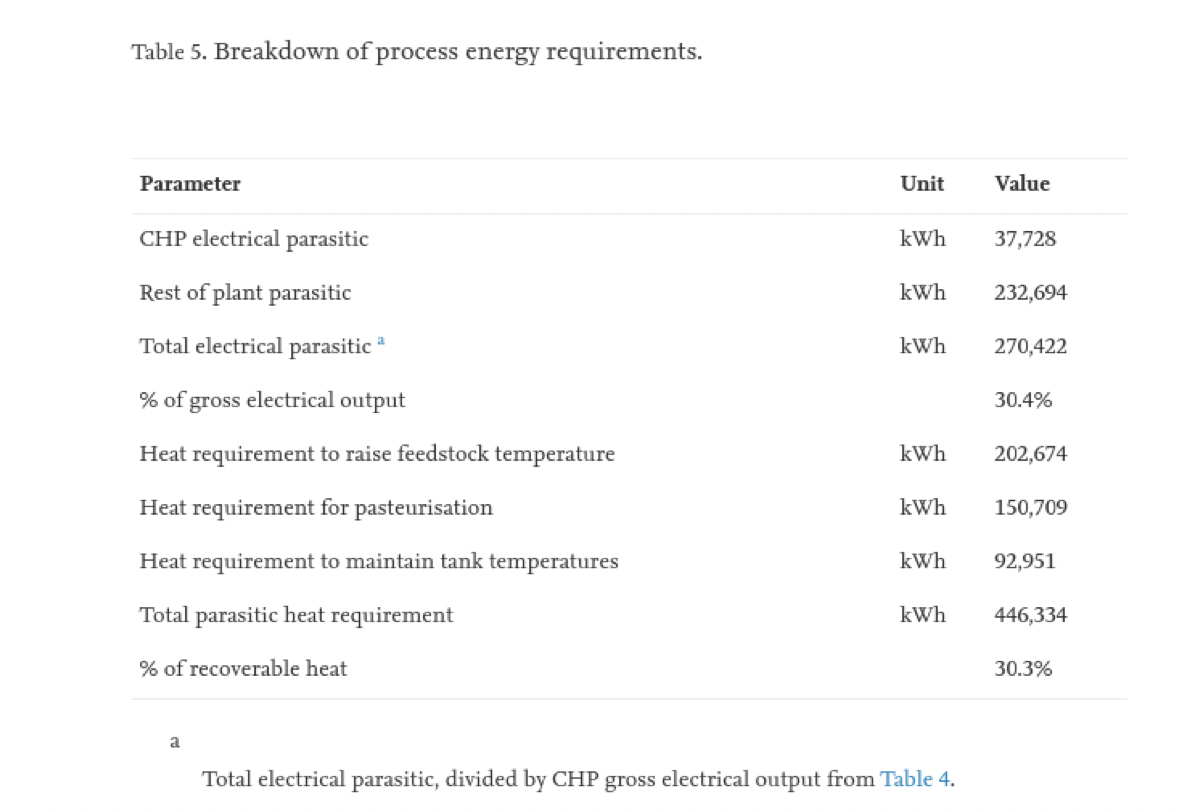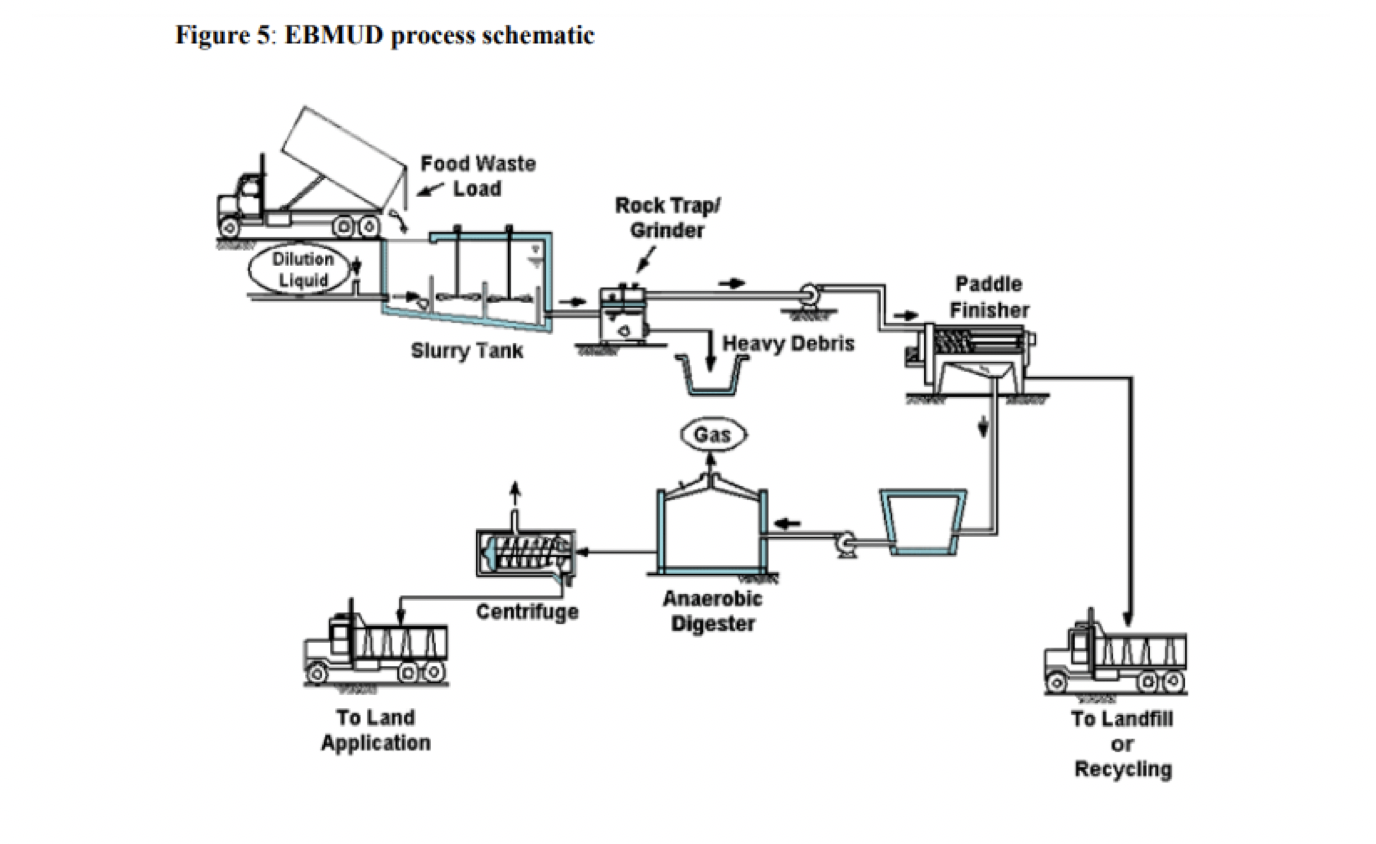• Arynn Rogers (L) and Alyssa Noble (R)
Hello everyone.
Our names are Alyssa Noble and Arynn Rogers.
We are students at Arizona State University, seeking a degree in sustainability. This summer we have been working on research for anaerobic digestion. We wanted to know how it worked, the efficiency of the system, and what kind of environmental impacts this system may have. We have spent countless hours searching for information on gas emissions and trade wastewater, but the issue is that there isn’t a lot of public information on the negative aspects of anaerobic digestion.
We have spent many of our days trying to contact those who may have information on the energy loss and efficiency of an anaerobic digester. We tried contacting professors, government entities, and even a local farm which has a digester, but we were unable to get quantifiable data from any of them. We aren’t sure if we were being put off because we were students, if we were being diverted because they didn’t want to offer up their data, or if there may not be any significant data to be analyzed. It was difficult but we found some useful information as to why we can’t find much data on anaerobic digestion.
One of the difficulties when it comes to calculating energy loss from anaerobic digestion is the fact that each feedstock produces different amounts of energy. A digester that is fed from cattle farms is going to produce a different amount of energy than a digester that is fed by solid food waste from a community.
• The image shows the different potential biogas yields in cubic meters per tonne of feedstocks.
As the graph above shows, itt would be hard to determine how much energy is lost within an anaerobic digester when the different feedstock inputs have different potential energy yields
With the digesters that we have studied, there are usually multiple feedstocks entering the digester. The digester owned by EarthPower Technologies in Camellia, Sydney, NSW, Australia, accepts municipal solid food waste from surrounding communities, therefore it is hard to calculate potential energy when the mixture of solid food within the feedstock is unknown.
Another reason why it is difficult to find a critical analysis of the negative environmental effects of anaerobic digestion is because this process diverts food waste that would otherwise end up in landfills. Earthpower claims that they process 1000 tonnes of food waste per week. That is quite a bit of waste being diverted from landfills that would otherwise decompose and produce methane gas that would be released into the atmosphere. Digesters are known to emit only 2-3% of methane which is significantly less than what would be released if all of the captured food waste for the digesters was instead taken to the landfill. However, this shows that it still has some sort of environmental impacts.
Of course, there are other, proven, solutions to ending food ranging financial or user pays through to composting. This blog does not compare these solutions and instead seeks to answer the question, is burning food for energy efficient?
Another review of the efficiency of anaerobic digestion and bioenergy on this blog site is here.
Data on the Efficiency and Waste of Anaerobic Digestion
Through the search for answers, we luckily found some useful information.
The United States Environmental Protection Agency conducted a three-year survey between 2017-2019 that was sent to 209 anaerobic digesters around the country who use food waste to get energy. The purpose was to reach a better understanding of food waste digestion in the United States. They also made this document publicly available because there is little information out there about the numbers, location, and characteristics of anaerobic digestion [4].
The survey was released in 2021 because the anaerobic digestion (AD) plants must wait until the following year to calculate data, such as the total amount of feedstock processed within the previous year [2]. This is another difficulty in providing accurate, up-to-date information to the public.
118 out of the 209 survey recipients responded.
The data collected tells how much energy is produced, how the energy is used, what digestate is produced, and what happens to the digestate, all organized by the type of digester. Unfortunately, there is no efficiency data although most digesters use energy produced to run the facility, which seems wasteful since a small portion of them are actually able to sell their energy. An average of 36% of the surveyed digesters sell their energy to the grid. If such a small number are selling energy, that means that a majority of digesters revenue comes from the tipping fees that clients must pay to take their food waste to those digesters.
This chart above from the survey shows the reported uses of biogas produced at anaerobic digesters. Many use the energy produced to power the plant and few sell energy to the grid [2].
From 104 survey respondents, 85 megawatts of energy were produced in 2018 through the digesters combined. This is enough to power 52,166 homes in a year. On average, this would be equal to powering about 500 homes per digester.
Even though that energy is produced, it doesn’t mean that the power makes it to those homes. The process of AD requires energy, where a lot of the produced energy goes to running the plant and keeping the digester at the proper temperature.
Most digesters also require gas cleaning systems to purify the biogas before it is burned.
After cleaning, there are remaining components. The most common components listed by the respondents included carbon dioxide, a greenhouse gas, hydrogen sulfide, which is highly flammable and toxic, and sulfur, which can be harmful to human health in large quantities or combine with other molecules to form other elements like sulfur dioxide that contributes to acid rain. Where do these components go after the cleaning?
The byproduct of AD, digestate, is also used in different ways. The most common uses are to de-water and apply it to land as a fertilizer, produce animal bedding, and a category “other” that is unspecified.
Shockingly enough, 13 of the respondents landfill some of their digestate. We thought AD was supposed to avoid that? 13 is a small number in comparison to all 118 participants, but there are also thousands of other digesters around the world who can send digestate to the landfill that are not included in the survey.
Unfortunately, the resulting fertilizer is not always a true benefit either, as it contains high levels of nitrogen and phosphorus. The two nutrients are leading causes of the excessive eutrophication of waterways, causing a lack of oxygen in water that leads to toxic algal blooms and dead zones.
A chart from the survey, above, shows the reported solid digestate uses. Landfill and incineration are polluting options [2].
In 2007, a study began on an anaerobic digester that was fed with mostly source-separated domestic kitchen waste for 14 months, in a location not mentioned, to measure its performance by mass and energy balance. The results were published in 2011. An email was sent to one of the authors asking for data explanations, but we have not yet received a response.
From the results of the gross electricity and heat output, 32% of the energy was electricity and 68% was heat. 15% of the heat produced was wasted, and 53% was recoverable. However, Banks and his colleagues explain, “There was no way to directly measure the heat output associated with the CHP (the method that converts biogas to electricity) or the amount of this heat that is used to maintain the temperature of the digestion plant.” With the inability to measure all of the heat, there is a portion of energy that goes unaccounted for [1].
This chart shows the electrical and heat outputs from the AD study, organized by percentages. 15% of the energy was wasted heat, however, it is difficult to accurately account for all of the energy [1].
There are different parts of this system that are powered by electricity, such as the raw waste shredder, macerators, feed pumps, biogas compressor pumps, CHP and boiler water feed pumps, belt press, air filtration, conveyors, and many others. Yet, there are no meters on the individual parts to monitor electricity usage. Therefore, the authors warn that the power used in these processes cannot be calculated from the hours that they are running.
The term ‘parasitic energy’ is given to represent the energy consumed on site.
From the breakdown of energy requirements, it is given that 30.4% of the total electrical output goes to the plant operations and 30.5% of the heat goes to raising feedstock temperatures, pasteurization, and maintaining digester tank temperatures. Besides using the energy for on-site purposes, the rest of the energy is either sold, flared, or lost.
Although we are not sure how to calculate the efficiency of this digester, there are other factors to consider, such as the amount of energy used for transporting the waste to the plant, transporting and distributing the digestate from the plant, and the amount of embodied energy within the waste that is lost through each step of the AD process.
According to Pham and his colleagues, it is concluded that AD has a 35% generation efficiency [3]. In their analysis, they also rated AD as ‘very poor’ with energy production yield. The technology can be very expensive with a long payback period.
• A chart from the 2011 study shows the breakdown of process energy requirements (parasitic energy) of a single anaerobic digester, calculated over a 14-month period
• This diagram shows the AD process for the East Bay Municipal Utility District (EBMUD) in California, a massive digester that serves approximately 650,000 people within 88-square-miles
Ideally, we would like to find the embodied energy in each step shown in the diagram above, but that information is not easily quantifiable given all of the variables. This AD uses 600 tons of waste per day [5].
From a US EPA report comparing the operations of six food-waste-to-energy/water resource recovery facility (WRRF) co-digesters of varying capacities from around the country, the processes, energy produced, biosolids, and investments were analyzed. The capital investments (USD) for each were $1.9 million, $35 million, $0.4 million, $2.02 million, $10.4 million, and $2.07 million. The payback periods of each, in the same order, were 5.5 years, 3.2 years, 0 years, 2.7 years, 12 years, and 7 years. With high costs, they don’t produce sufficient energy.
According to the same report, WRRFs can sell excess energy if they meet the interconnection standards, which may involve “complex and costly and contractual considerations'' [5]. For example, the EBMUD digester from the diagram above had to drop $1.3 million to upgrade their connection with Pacific Gas & Electric (PG&E), a massive energy company in California. Some WRRFs avoid selling their excess electricity because it is a burden - interconnection can cost 5-10% of the installation cost of new generation and impact the project economies [5]. This explains why many ADs don’t sell their energy, as it ensures extra costs to the facility.
From our analysis, we determined that AD is inefficient by having a high price tag, low energy production, nonexistent hard data collection systems, and hidden pollution via wastewater and air emissions.
For an AD to operate, at least here in the United States and in Australia, they must meet local, state, and federal requirements as well as obtain licenses and other permits for air, solid waste, and water. These systems are essentially a way to manage waste, not to produce an environmentally-friendly energy for masses of people to use as we had once thought. However, there is a much better way to make use of food waste rather than burning it.
Composting, which is taking organic food waste and mixing it with other organic matter such as leaves, grass clippings, and dirt to produce a healthy soil, is the best method of diverting food waste from the landfill. It can be done anywhere, whether it be someone’s backyard, in a bin behind a restaurant, at a large corporate building, or on the side of an urban street, meaning it doesn’t require much transportation. The breakdown of the waste can happen quickly, and the resulting soil works wonders on gardens and plants. Composting is an energy efficient way to return and recycle nutrients to our mother Earth. To compost, you won’t need a multi-million dollar facility that potentially pollutes the surroundings.
More research and data collection are necessary to provide solid data on the downsides of digesting and burning food waste for energy. In the meantime, composting is a simple way to combat climate change by creating rich soils to grow food and reducing your personal food waste at home.
Project Drawdown, a research organization that searches for climate change solutions, estimated that if worldwide composting efforts grew, 2.1 billion tonnes of carbon would be kept from entering the atmosphere by 2050.
While we are making some progress to mitigate our food waste, it is not enough.
At the retail and consumer levels, we are throwing away around 30% of food. At this rate, we will need to create more landfills just to hold all of the waste. Over-producing and over-purchasing food is degrading lands that we rely on to grow food for the world’s rising populations. In addition, the lands that were converted into a landfill may have been home to many different plants and animals that are now homeless or dead. We are perpetuating climate change, we are destroying natural resources, and we are not taking care of the very land that grows our food. If we continue on this path, we will end up like the many civilizations before us that are now in ruin due to poor resource management.
The people of Easter Island, the Anasazi and the vikings of Greenland were once prosperous societies. They thrived in their lands due to abundant resources and good relationships with their neighbors. Each civilization fell due to environmental damage such as deforestation, climate change, hostile neighbors, the collapse of trade, and/or cultural response. This is exactly what the world faces now. We don’t just face one of the five essentials for a prosperous society, we face all five. We have done so much environmental damage to our rainforests, coral reefs, and farmland that we are experiencing widespread fires, coral bleachings, and soil erosion. We are experiencing a height in climate change due to this anthropogenic greenhouse era. In this modern day, we sometimes struggle with foreign policy which can hinder some of our trade. We have also experienced a global pandemic that has caused major effects on supply chains and food shortages. However, the biggest issue that we face is cultural response.
Cultural response is the largest issue we face because the rich 1% of our population controls the government to one degree or another. When policies come to a vote, many politicians can be swayed to vote one way or another depending on who “sponsors” them. Many corporations want to continue getting rich so they will do what they can to sway the votes. This is an issue because many rich individuals or companies have a hand in fossil fuels, coal production, farming, and other industries that are harmful to the environment. While they get richer, many people starve, have polluted waterways, or continue to mine without decent compensation or safety measures in place. The two sides are so polarized which causes policies to never get passed to better the environment. We are fighting each other rather than fighting to save the only planet we have.
That is to say that if we continue on the path that we are going, we could face collapse like the many great nations before us. If we continue to pile our garbage high and neglect composting food waste to burn instead, we not only harm the atmosphere which causes a cascade of climate change effects, but we also lose land and fertile soil that could otherwise be used to grow food locally for the increasing population. In this way, all of our decisions are connected. We either choose to reduce our waste and find better options to make use of the food waste, or we choose to further degrade our planet which may have irreversible consequences.
Alyssa Noble, Arynn Rogers
Resources
[1] Banks, C. J., Chesshire, M., Heaven, S., & Arnold, R. (2011). Anaerobic digestion of source-segregated domestic food waste: Performance assessment by mass and energy balance. Bioresource Technology, 102(2), 612–620. https://doi.org/10.1016/j.biortech.2010.08.005
[2] Pennington, M. & United States Environmental Protection Agency. (2021, January). Anaerobic Digestion Facilities Processing Food Waste in the United States (2017 & 2018). United States Environmental Protection Agency. https://www.epa.gov/sites/default/files/2021-02/documents/2021_final_ad_report_feb_2_with_links.pdf
[3] Pham, T. P. T., Kaushik, R., Parshetti, G. K., Mahmood, R., & Balasubramanian, R. (2015). Food waste-to-energy conversion technologies: Current status and future directions. Waste Management (Elmsford), 38(1), 399–408. https://doi.org/10.1016/j.wasman.2014.12.004
[4] United States Environmental Protection Agency. (2020, July 9). Frequent Questions: EPA Reports on Anaerobic Digestion Facilities Processing Food Waste in the United States. US EPA. https://www.epa.gov/anaerobic-digestion/frequent-questions-epa-reports-anaerobic-digestion-facilities-processing-food
[5] United States Environmental Protection Agency Office of Research and Development. (2014, September). Food Waste to Energy: How Six Water Resource Recovery Facilities are Boosting Biogas Production and The Bottom Line. United States Environmental Protection Agency. https://nepis.epa.gov/Adobe/PDF/P100LDEL.pdf








